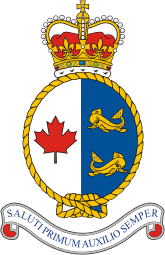
The Canadian Coast Guard is the coast guard of Canada. Formed in 1962, the coast guard is tasked with marine search and rescue (SAR), communication, navigation, and transportation issues in Canadian waters, such as navigation aids and icebreaking, marine pollution response, and support for other Canadian government initiatives. The Coast Guard operates 119 vessels of varying sizes and 23 helicopters, along with a variety of smaller craft. The CCG is headquartered in Ottawa, Ontario, and is a special operating agency within Fisheries and Oceans Canada.
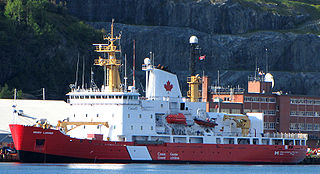
CCGS Henry Larsen is a Canadian Coast Guard Improved Pierre Radisson-class icebreaker serving in the Newfoundland and Labrador region and based in St John's, Newfoundland and Labrador. Entering service in 1988, Henry Larsen is the fourth ship and of an improved design over the rest of the ships in her class. The ship operates in the Arctic Ocean during summer months.

CCGS Samuel Risley is a Canadian Coast Guard icebreaker and buoy tender assigned to the Great Lakes area. Lead ship of her class, the vessel is named after Samuel Risley, the 19th century maritime inspector and first head of Board of Steamship Inspectors for Upper Canada and Ontario. Based in the Great Lakes, CCGS Samuel Risley is responsible for keeping an ice-free passage between Port Colborne, Ontario and Thunder Bay, Ontario.

CCGS Amundsen is a Pierre Radisson-class icebreaker and Arctic research vessel operated by the Canadian Coast Guard. The vessel entered service in 1979 as Franklin and was renamed Sir John Franklin in 1980 and served as such until 1996. Declared surplus, the vessel was used as an accommodation ship in Labrador in 1996 and placed in reserve in 2000. In 2003, the ship was reactivated and underwent conversion to an Arctic research vessel. The ship recommissioned as Amundsen.

CCGS Louis S. St-Laurent is a Canadian Coast Guard (CCG) heavy icebreaker. Louis S. St-Laurent's home port is St. John's, Newfoundland and Labrador. She is the largest icebreaker and flagship of the CCG.

CCGS Sir William Alexander is a Martha L. Black-class light icebreaker. Entering service in 1987, the vessel is currently assigned to CCG Maritimes Region and is homeported at CCG Base Dartmouth, in Dartmouth, Nova Scotia. The vessel is named after Scottish explorer Sir William Alexander, 1st Earl of Stirling, who was an early colonizer of Nova Scotia.
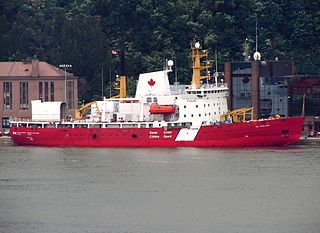
CCGS Des Groseilliers is a Pierre Radisson-class icebreaker in the Canadian Coast Guard. The vessel is named after Médard Chouart des Groseilliers (1618–1669) a close associate of Pierre-Esprit Radisson in explorations west of the Great Lakes and the founding of the British Hudson's Bay Company. The ship entered service in 1982. The vessel has participated in a number of research voyages, including Ice Station SHEBA. As part of the Surface Heat Budget of the Arctic Ocean experiment conducted in the Arctic Ocean from October 1997 to October 1998 to provide polar input to global climate models, Des Groseilliers was allowed to be frozen into the ice for the Arctic winter, to serve as a base for scientific researchers.
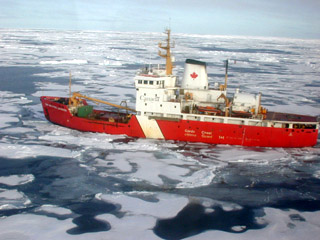
CCGS Sir Wilfrid Laurier is a Martha L. Black-class light icebreaker and major navaids tender of the Canadian Coast Guard. Built in 1986 by Canadian Shipbuilding at Collingwood, Ontario, Canada, she was the last ship constructed there. The ship has been based out of Victoria, British Columbia.

USCGC Maple (WLB-207) is a Juniper-class seagoing buoy tender operated by the United States Coast Guard. She was based at Sitka, Alaska for 16 years and is currently homeported at Atlantic Beach, North Carolina. Her primary mission is maintaining aids to navigation, but she also supports search and rescue, law enforcement, oil spill response, and other Coast Guard missions.
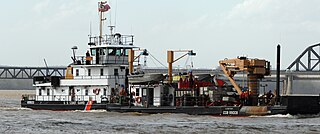
A buoy tender is a type of vessel used to maintain and replace navigational buoys. This term can also apply to an actual person who does this work.

CCGS John A. Macdonald was a Canadian Coast Guard heavy icebreaker. She was named after The Right Honourable, Sir John Alexander Macdonald, the first Prime Minister of Canada. The ship was commissioned into the Canadian Department of Transport's Marine Service in 1960 using the prefix "Canadian Government Ship" (CGS). The vessel was transferred in 1962 into the newly created Canadian Coast Guard (CCG) and served with distinction until being decommissioned in 1991, and replaced by the then-chartered CCGS Terry Fox.

CCGS Tupper was a Canadian Coast Guard ice-strengthened buoy tender that served from 1959 to 1998. The vessel spent her entire career on the East Coast of Canada. Following her Canadian service, Tupper was sold to private interests with the intention of converting her to a yacht, but the conversion never happened and the vessel moved about Halifax Harbour, suffering a fire in 2008 before being sold for scrap in 2011. The vessel was not scrapped and the Canadian Coast Guard was forced to address the pollution concerns of the abandoned vessel in 2021.
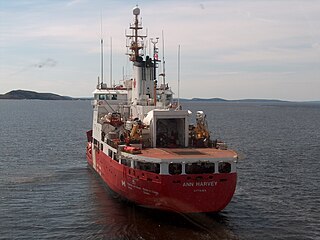
CCGS Ann Harvey is a Canadian Coast Guard buoy tender and SAR vessel with light icebreaker duties. She was constructed in 1987 by Halifax Dartmouth Industries, in Halifax, Nova Scotia. The vessel was named after Ann Harvey, the daughter of a local Newfoundland fisherman who helped rescue 185 people during her lifetime. Ann Harvey's home port is St. John's, Newfoundland and Labrador and is stationed there with other Coast Guard ships.

CCGS Captain Molly Kool is a Canadian Coast Guard converted medium class icebreaker. She was originally built as an icebreaking anchor handling tug Vidar Viking for Trans Viking Icebreaking & Offshore in 2001. The vessel was acquired by the Canadian Coast Guard in August 2018 and was commissioned in May of the next year after refit.

CCGS Pierre Radisson is the lead ship of her class of icebreakers. Constructed and operated by the Canadian Coast Guard, the vessel is based at Quebec City on the Saint Lawrence River. The ship was constructed in British Columbia in the 1970s and has been in service ever since. The vessel is named for Pierre-Esprit Radisson, a 17th-century French fur trader and explorer.

CCGS Earl Grey is a Samuel Risley-class light icebreaker and buoy tender in the Canadian Coast Guard. Constructed in 1986, the vessel serves a variety of roles, including light ice-breaking and buoy tending, as well as being strengthened for navigation in ice to perform tasking along the shores off the Atlantic coast of Canada. Like her sister ship, CCGS Samuel Risley, she carries a large and powerful crane on her long low afterdeck for manipulating buoys. Earl Grey is the second icebreaker in Canadian service to carry the name.

CCGS George R. Pearkes is a Martha L. Black-class light icebreaker and buoy support vessel in the Canadian Coast Guard. Named for Victoria Cross-winner George Pearkes, the ship entered service in 1986. Initially assigned to Pacific region, the vessel transferred to the Quebec region. George R. Pearkes was assigned to her current deployment, the Newfoundland and Labrador region in 2004.

CCGS Martha L. Black is the lead ship of her class of light icebreakers of the Canadian Coast Guard. The ship was built in 1986 in Vancouver, British Columbia by Versatile Pacific Shipyards Limited as part of the CG Program Vessels. The vessel was mainly designed as a high-endurance, multi-tasked boat. Most of her duties are along the St. Lawrence River and St. Lawrence Seaway as she is able to handle the ice thickness there.

The Pierre Radisson-class icebreakers, also known as R-class icebreakers, are a class of four icebreakers constructed for and operated by the Canadian Coast Guard. The Canadian Coast Guard designates the four ships in the class as medium icebreakers. Built in two phases, the first three ships, Pierre Radisson, Franklin and Des Groseilliers, were built to a common design. The fourth, Henry Larsen was built to a modified design and is considered a subclass, the Improved R-class icebreaker. Franklin was later renamed Sir John Franklin before undergoing a re-design for use primarily as an Arctic research vessel. Upon the vessel's return to service, the ship was once again renamed Amundsen. All the vessels are named for people who sailed through Canada's northern waters. The class operates in the Arctic Ocean in the summer, patrolling, icebreaking and research missions.


















